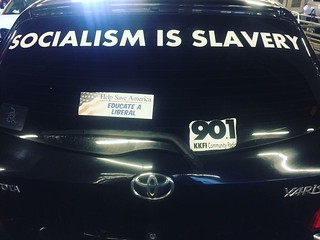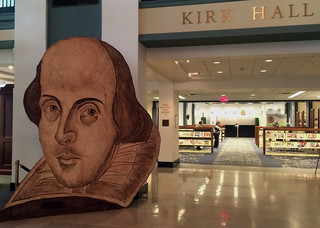Key Uncertainty.
Some notes on Tributary @ La Esquina, May 12th-June 10th, 2017, from the Chief Hydrologist.
Trace a river to its headwaters and you will swim
through any number of aphorisms. The
clearest of which might be, river is as
river does. Same might be said of artists. And scientists. From a managerial perspective, each can
appear uncontrollable; yet boundless inquiry and unfettered meandering are not
without purpose. Rivers mark time but
also create it. They erode physical and mental obstructions. They challenge extant
notions and forge new paths. Same might be said of artists. And scientists.
Despite legislature dating back nearly two centuries
to ‘improve’ the nearly 4000 kilometers of the Missouri River, the longest
river in the USA, the groups charged with enacting said changes can’t agree as
to what this means. A river master plan
requires us to create false notions about the nature of a stream, i.e., human
existence stands outside the river rather than being integral to its flow. Such hubris allows us to minimize floodplain
connectivity, disregard centuries of community history, and undermine the concept
of water as giver. This neglect is done in favor of bullet points from an agency
founded on building forts. Such thinking has shortened the river by 320 km and
eliminated 12,000 km2 of riparian corridor habitat. Your taxes paid
for the disappearance.
Thirty American Indian tribes reside in the Missouri
River Basin. Many of those nation’s sovereign views are at odds with the notion
that it takes an act of Congress to establish the river’s purpose. They
(Congress) decided on six: flood control, navigation, power, recreation, and water
supply. Attorneys and environmentalists later convinced them they meant to
include fish and wildlife and water quality. Taste-makers constantly review the
list but currently (2017) we are stuck on eight. Note that metaphor is not
considered an authorized purpose. Unless one happens to be an artist. Or a
scientist. River is as metaphor does.
Countless tributaries drain into the Mighty Missouri
and endless stories arise from it.
Here’s one you might want to finish. Begin with, how did we get here?
What was formerly a river is now called a System. A system with benefits. From
such great minds the concept of a river protected by a Master (manual) was
born. Should we be surprised that the manual has been protected by an army and
the troops (the Corps of Engineers) reside in castles? The scaffolding surrounding
such thinking has been buttressed by concrete, revetments, and Congressional
acts. Only massive floods can disrupt such malfeasance but truth told, such
events more often serve to deepen manifest destiny conspiracies. Your kingdom
in exchange for a piping plover, interior least tern, or pallid sturgeon.
The first bridge to span the largest tributary to the
Missouri River (the Mississippi) was designed by James B. Eads, a former
salvage-man, who walked not on water but on the river bottom. The knowledge
gained from such intimate interaction with the rich sediment load produced a steel
arch bridge like none before. This
project helped Eads restore his reputation and finances. His astute
understanding of stream sediment dynamics was eventually turned into a new,
national philosophy of environmental control: streams make money the
old-fashioned way, they earn it.
Today it is not uncommon for decision makers to stand
at podiums and surf terms like expected
outcomes, effects analysis, and preferred alternatives above the
audience. Language so invasive that it sometimes burdens the campfires of
recreationalists who prefer to swim in the river rather than profit from it.
There is always fortune to be found on a river.
As well as a supply of misfortune.
But understanding each is, like the difference between praying for rain
and surviving a flood, often a matter of perspective.
It can take days, weeks, even months for a drop of
water to filter down through tributaries to the main stem of the Missouri River.
However, once that water reaches the channelized, lower section it will
typically reach the river’s mouth within 10 days. This means a variety of
physical and chemical pollutants travel largely unabated to St. Louis. At St.
Louis, the Missouri River comingles with waters draining the eastern half of
the US and onward all will flow down the Mississippi. In another couple of
weeks those waters, along with their burdens, will swim in the Gulf of Mexico.
The works collected for Tributary ask you to change your
perspective on the Missouri River and its tributaries. Some works catalogue streams
but wrap it anew, be it in a shroud of media, consumer goods, or waste
products. Others produce experiences that link human actions to environmental
consequences. Some works provide a lens through which to see through the mud,
the vagaries, or the endless change. Together these works imagine a future for
the river without disregard for the resource.
Rivers can confound us but the recent past doesn’t have to predict the
future. It’s not a clever idea to test the depth of a stream with both feet. Instead,
baptize your heart and soul in the murkiness and surrender to the undulations
of wind, waves, and current. Swim in Tributary
then take a river bath and stand naked of fear.
References.
Big
Dam Era, 1993. John R. Ferrell, Missouri River Division, U.S. Army
Corps of Engineers, Omaha, NE.
Dammed
Indians Revisited: The Continuing History of the
Pick-Sloan Plan and the Missouri River Sioux, 2009. Lawson, Michael L., South
Dakota State Historical Society Press, Pierre, SD.
Draft
Missouri River Recovery Management Plan and Environmental Impact Statement, December
2016. U.S. Army Corps of Engineers and U.S. Fish and Wildlife Service, 6
volumes, variously paged.
Flood
Control Act of 1944, An act authorizing the construction of certain public
works on rivers and harbors for flood control, and for other purposes.
Act of 22 December 1944, ch.665, 58 Stat. 887.
Missouri
River, 1935. Letter from the Secretary of War transmitting
report from the Chief of Engineers on Missouri River and tributaries, covering
navigation, flood control, power development and irrigation, House Document
238, 73rd Congress, 2nd session, US Govt Printing Office.
The
Great Flood, 2014 (Icarus Films release date). Film
by Bill Morrison, music by Bill Frisell, performed live at the Nelson Atkins
Museum, April 2017.
The
Great Flood of 1903: Being
A Graphic Story of How Two Mad Rivers, the Missouri and the Kaw, Deluged Kansas
City and Its Suburbs, 1903. Hill, W.R., Enterprise Publishing, Kansas City,
MO.
The
People of the River's Mouth: in Search of the Missouria Indians,
2011. Dickey, Michael, Univ. of Missouri Press, Columbia, MO.
We
Remember Rivers: An Oral History survey of the River Valleys in the Harry S.
Truman Dam and Reservoir Project, Missouri, 1980. Sprunk,
Larry, J., Historical and Archaeological Surveys, Garrison,
ND.
What
the River Carries: Encounters with the Mississippi, Missouri, and Platte,
2012. Lisa Knopp, Univ. of Missouri Press, Columbia, MO.
Wild
River, 1960, directed by Elia Kazan. 20th Century Fox.
Tributary @ Healthy Rivers Partnership, April 8-22, 2017
Curatorial Statement.
To understand this language of sites is to appreciate the metaphor between the syntactical construct and the complex of ideas, letting the former function as a three-dimensional picture which doesn't look like a picture.This little theory is tentative and could be abandoned at any time. Theories, like things, are also abandoned. That theories are eternal is doubtful. Vanished theories compose the strata of many forgotten books.--Robert Smithson[1]
It’s possible to launch a stone from the roof of this building and have it land in the Missouri River. We’re that close. But you can’t see, touch, or smell the river from inside. The history of places stands between you and water’s edge. And these are not little obstacles. A levee. A rail line. Warehouses. Roads. Stench from past and current sins. You’d need to get through all that to arrive at water. Which, I guess, is why, despite us being that close to one of our nation’s greatest natural resources, few venture the journey. No matter how short.If, as Twain remarked, the Mississippi Basin is the body of the nation, then the Missouri River Basin is surely it’s brains, heart, and soul. The Missouri River has almost as many tributaries as stories. The stories, like tribs and fish, often get bigger if one must wait out a storm on its banks. The river also has eddies. I’ve seen them, day and night. Sometimes they make a sucking sound but mostly they remind me of meadowlarks that greet the morning. Traveler, do not be afraid of the journey that awaits. Call to it and sound its depths for it is both shallow and murky, swift and dangerous.These works are about the river in the same way that fishing is about the river. Or that Jesus was about fishing. To cast a line into the water is to understand that tension is the first surprise of any reward to follow. Some say the river waits for no one. Or did they mean time. Same thing really. River and time. I say no rain, no river. Holy water will, by definition, have some of both else it would be other-worldly rather than merely restorative. Step inside and dunk yourself in the real. Or the metaphorical. Doesn’t matter because we need both and all faiths are accepted.
[1] A Provisional Theory of Non-sites, in Robert Smithson: The Collected Writings, Jack Flam, ed., Univ. of California Press, Berkeley, California, 2nd Edition, 1996.
A Walk from a River Sculpture to a Sculpture on the River
Tributary at Healthy Rivers Partnership.
Join artist Karen McCoy and walk two States along the Freedom Trail. Sites to view along the way: a river sculpture, a sculpture about the river, a sculpture on the river. View the only monument in the state of Missouri celebrating African Americans who escaped slavery. You will depart Healthy Rivers Partnership, 815 Woodswether Rd, Kansas City, MO 64105 at 1:15 and return by 2:45 pm. Trail is covered for most of the way so event is rain or shine. Come early or stay after because at 1 and 3 pm, artist Caitlin Horsmon will show her expanded media piece, "Every Time I Go Outside the World is Different." at HRP. Other installations works also on view.
Join artist Karen McCoy and walk two States along the Freedom Trail. Sites to view along the way: a river sculpture, a sculpture about the river, a sculpture on the river. View the only monument in the state of Missouri celebrating African Americans who escaped slavery. You will depart Healthy Rivers Partnership, 815 Woodswether Rd, Kansas City, MO 64105 at 1:15 and return by 2:45 pm. Trail is covered for most of the way so event is rain or shine. Come early or stay after because at 1 and 3 pm, artist Caitlin Horsmon will show her expanded media piece, "Every Time I Go Outside the World is Different." at HRP. Other installations works also on view.
 |
| Walking map. Begin at HRP. Stop at Surplus Exchange, then to Woodswether Bridge over the Kansas River and then back again. |
Tributary Opens at Healthy Rivers Partnership
To understand this language of sites is to appreciate the metaphor between the syntactical construct and the complex of ideas, letting the former function as a three- dimensional picture which doesn't look like a picture.This little theory is tentative and could be abandoned at any time. Theories, like things, are also abandoned. That theories are eternal is doubtful. Vanished theories compose the strata of many forgotten books.--Robert Smithson1
It’s possible to launch a stone
from the roof of this building and have it land in the Missouri River. We’re
that close. But you can’t see, touch, or smell the river from inside. The
history of places stands between you and water’s edge. And these are not little
obstacles. A levee. A rail line. Warehouses. Roads. Stench from past and
current sins. You’d need to get through all that to arrive at water. Which, I
guess, is why, despite us being that close to one of our nation’s greatest
natural resources, few venture the journey. No matter how short.
If, as Twain remarked, the
Mississippi Basin is the body of the nation, then the Missouri River Basin is
surely it’s brains, heart, and soul. The Missouri River has almost as many
tributaries as stories. The stories, like tribs and fish, often get bigger if
one must wait out a storm on its banks. The river also has eddies. I’ve seen
them, day and night. Sometimes they make a sucking sound but mostly they remind
me of meadowlarks that greet the morning. Traveler, do not be afraid of the
journey that awaits. Call to it and sound its depths for it is both shallow and
murky, swift and dangerous.
These works are about the river
in the same way that fishing is about the river. Or that Jesus was about
fishing. To cast a line into the water is to understand that tension is the
first surprise of any reward to follow. Some say the river waits for no one. Or
did they mean time. Same thing really. River and time. I say no rain, no river.
Holy water will, by definition, have some of both else it would be
other-worldly rather than merely restorative. Step inside and dunk yourself in the
real. Or the metaphorical. Doesn’t
matter because we need both and all faiths are accepted.
m.o.i. aka
The Minister of Information, Chief Hydrologist for Tributary, April 2017.
1 A
Provisional Theory of Non-sites, in Robert Smithson: The Collected Writings,
Jack Flam, ed., Univ. of California Press, Berkeley, California, 2nd Edition,
1996.
A Billboard that Wasn't
Recently I submitted the above mock-up for a pair of art billboards. It may not come as a surprise to some that they were not selected for inclusion. And as much as I would have preferred that they were included, up front, I realized it was a long shot that they might not be seen in a favorable light by a review committee composed, in part, of business interests. Regardless, I felt it was important in a program about art, more specifically one using billboards as an art framing device, that the proposed work should do just that: acknowledge that the medium is a billboard and given that, how can proposed work be framed within the history of outdoor advertising and how can I, as an artist, respond to such constraints in a meaningful way.
Those interested in learning more about the history of outdoor advertising can consult this industry view which contains a keynote speech by the current director, Nancy Hartman, at the Duke Harman Center. Duke also maintains a large library of digital images that are worth a view.
Those interested in learning more about the history of outdoor advertising can consult this industry view which contains a keynote speech by the current director, Nancy Hartman, at the Duke Harman Center. Duke also maintains a large library of digital images that are worth a view.
Large-scale Community History Murals
 |
| Panoramic view of a portion of the Spirit of Argentine mural. |
 | ||
| Panoramic view of a portion of the Spirit of Argentine mural. |
The Argentine mural was produced under the direction of Jesus Ortiz and includes the work of muralists: Alicia Gambino, Jose Faus, Martha Vivanco, Virginia Delgado, Tadeo Franco, and Ardis Peterson.
Even more disappointing is that recent development in the Power and Light District has covered up the second portion of that mural which spanned a block to the east (Walnut to Oak). The mural depicted the history of Kansas City Monarch and Negro League baseball in the city. Although visitors can still sample this rich heritage at the Negro League Hall of Fame a few blocks to the east, it's sad to see this landmark get covered by gentrification.
The Troost Avenue Murals of Alexander Austin
 |
| Alexander Austin mural, The King, 3217 Troost Ave., Kansas City, MO |
In The King, images of Dr. ML King, Jr in both oratory and reflection flank both the left and right sides of the murals. Also featured on the mural is a young Michael Jackson, the King of Pop. The muralist Austin can be seen kneeling in deference the King's legacy.
 |
| Alexander Austin mural, Manheim Grandmothers, St. Vincent de Paul Thrift Store, 3922 Troost Ave., KCMO |
A few blocks south, at the St. Vincent de Paul Thrift Store, lies a mural like none other in the region. It's depicts four grandmothers: Lucille Leaphart, Orisa Kelly-Hogan, Avern Hughes, and Dorothy Hawkins (left to right) of the Manheim Neighborhood. In the center lies an image of St. Vincent de Paul. By placing these women, stalwarts of the neighborhood on each side of de Paul, Austin elevates them to saintly status and gives them their due respect.
 |
| Alexander Austin mural, 31st & Troost, Pergola Park/Osage Trail Station. Color mural on right added later by different muralist. |
Avienda Cesar E. Chavez
If you want to see murals in Kansas City perhaps the first place to visit is Avienda Cesar E. Chavez. Across the street from the Guadelupe Center, a mural dedicated to the avenues namesake, wraps around a staircase. Brightly colored and finely detailed, it beckons one to ascend the steps into Gage Park which lies beyond and find a new world.
But go west, young man. Go West. At the western-most end of the avenue lies a block of murals dedicated to Meso-American cultures. Created in 1985, the murals—despite some fading and chipping—are still rich reminders of these cultures as well as the culture of great community art and mural making that still thrives in Kansas City, Kansas. The murals were created by a group of artists led by Lee Ann Perez, Javier Perez, and Clemente Raya Sr.
But go west, young man. Go West. At the western-most end of the avenue lies a block of murals dedicated to Meso-American cultures. Created in 1985, the murals—despite some fading and chipping—are still rich reminders of these cultures as well as the culture of great community art and mural making that still thrives in Kansas City, Kansas. The murals were created by a group of artists led by Lee Ann Perez, Javier Perez, and Clemente Raya Sr.
 |
| Mayan Warrior, Bonampak, 800 AD |
 |
| The Life of the Mixtec King Eight Deer Tiger Claw |
 |
| Aztec Glory |
Obama Gets a New Style
Folks had a great time during the opening session of Cut Your Hair in the Socialist Style creating a new look for the President for the upcoming lame-duck session of Congress. Can you tell which of these is a Disconnected Undercut?
Nonsense, Campaign Posters, and Propaganda
 If your interested in the art of the political poster, then Presidential
campaigns are good places to look since at least 80 percent of their
effort is pure propaganda. Ten percent is utter nonsense. The rest,
perhaps a smattering of truth.
If your interested in the art of the political poster, then Presidential
campaigns are good places to look since at least 80 percent of their
effort is pure propaganda. Ten percent is utter nonsense. The rest,
perhaps a smattering of truth.People tend to forget that Eldridge Cleaver, the Minister of Information for the Black Panthers, also ran for President. On the Peace and Freedom Party ticket. He didn't fare that well; he wasn't even 35 at the time of the election. The constitution is rather vague on when you need to come of age in order to be President. While campaigning? before the swearing-in ceremony?; at any point during the 4 year term? Only the all-seeing Founding Fathers knew.
Labor Day Flag and Barber Pole raising
On Labor Day we raised the flag and a barberpole on Cut Your Hair in the Socialist Style. The first program, The Disconnected Undercut, is, Thursday, Sept. 15th and features Dylan Mortimer and Misha Kligman.
1968: a summer of screenprints
Recently I've been looking at a lot of propagandga posters. It seems that 1968 was an especially fruitful year for them. Likely because of all the turmoil that happened in '68: assassignations of ML King Jr, Robert Kennedy, the capture of the USS Pueblo by the North Koreans, the Tet Offensive, violence during the Democratic Convention in Chicago. But the student riots in Paris in May of that year produced some the best silkscreen poster art seen in some time. Many of these images became iconic symbols to be wrapped into other forms of protest. Late in the summer of '68, two American sprinters, John Carlos and Tommie Smith, would spin the heads of conservatives into the ground as they attempted to raise consciousness about human rights by raising their gloved hands during an Olympic medal ceremony.

A lot of the protest works that really stand out from 1968 have very simple, but very compelling imagery and messages. Black and white white screen prints by largely unknown artists on topics such as uncensored information, protesting warmongers, and basic human rights.This approach was in great contrast to earlier WPA propaganda posters where professional artists relied heavily on complex imagery and layering to create distinct visual identity. Some of this style difference is surely attributable to the self-funded nature of the student protests versus government funded professionally trained artists of the WPA.
Around the same time, in Washington Reverend Ralph Abernathy was leading the Poor People's Campaign and march. The image below, produced by the Southern Christian Leadership Committee, displays a similar design approach to those seen in France about the same time: clear, sparse, and effective.

A lot of the protest works that really stand out from 1968 have very simple, but very compelling imagery and messages. Black and white white screen prints by largely unknown artists on topics such as uncensored information, protesting warmongers, and basic human rights.This approach was in great contrast to earlier WPA propaganda posters where professional artists relied heavily on complex imagery and layering to create distinct visual identity. Some of this style difference is surely attributable to the self-funded nature of the student protests versus government funded professionally trained artists of the WPA.
 |
| French Prime Minister, Charles De Gaule, was a favorite target of satirists. |
THE GOLD STANDARD
Admit it; you were keeping score. And we won! Our treasure trove of gold, silver, and bronze
was prime-time worthy. American women won 27 gold medals, as many as the entire
country of Great Britain, more than China, 40 percent more than Russia. The Rio
Olympics turned watching gymnastics—once shunned as the Cold-War provenance of
Eastern Europe—into a Red State, core family value. Provided one had the requisite cable provider
to be able to tune in.
Unlike state-sponsored sporting events that demand a return
on investment, art should never try to be popular. Sports are Collectivism. Art
is Individualism. As Oscar Wilde noted, the great value of art is that it
disturbs us and disintegrates the fixed idea. And therein lies the rub.
Despite the protestations of some, and with the
encouragement of others, we are moving forward.
On Labor Day we will hoist the flag, raise the barber pole, and proclaim:
CUT YOUR HAIR IN THE SOCIALIST STYLE! A series of programs will thereafter
ensue.
Program #1. The Disconnected Undercut.
Where: The Drugstore KC, 3948 Main St, Kansas
City, MO 64111
In the barber chairs:
Charlotte St Fellows Dylan Mortimer
and Misha Kligman
Convening at 6:30pm
(light socialist snacks and beverages). Barbering
and discussion begins promptly at 7pm.
Topics for discussion during this performance (fixed ideas
these are not). Who’s your favorite socialist: Jesus, Pope Francis, or Bernie
Sanders? Your least favorite: Barack
Obama, Hillary Clinton, or Donald Trump? Sports as collectivism. Art as individualism. Banners, slogans, and
apartment art: untitled conceptualism in the face of oligarchy. alt-socialism. Solidarity and love. The price of a decent
haircut. The tyranny of dialogue.
Sharpen Your Scissors!
It’s not always easy being a socialist. Sometimes it’s work.
Here’s some of the research we’ve been examining over the summer as we prepare to Cut Your Hair in the Socialist Style.
And what would summer be without a few movies? Here’s some that have been informing our progress.
Here’s some of the research we’ve been examining over the summer as we prepare to Cut Your Hair in the Socialist Style.
A sampling of our summer reading list.
- Black Liberation and Socialism. Ahmed Shawki. Haymarket Books, 2006.
- Atomic City: the Untold Story of the Women Who Helped Win WWII. Denise Kiernan. Touchstone, 2014.
- The Ransom of Russian Art. John McPhee. McMillian. 1994.
- Hairdresser and Barbershop Signs in Africa. Nataša Njegovanović Ristić. Exhibition catalogue. 2009.
- Thinking with Type. Ellen Lupton. Princeton Architectural Press. 2010.
- A Peoples Art History of the United States. Nicolas Lambert. The New Press. 2013.
- All of Us or None of US: Social Justice Posters from the San Francisco Bay Area. Lincoln Cushing. Heyday. 2012.
And what would summer be without a few movies? Here’s some that have been informing our progress.
- The Propaganda Game. Director, Álvaro Longoria. 2015.
- Barbershop: The Next Cut. Director, Malcolm D. Lee. 2016.
- Do The Right Thing. Director, Spike Lee. 1989.
- Welcome to Leith. Directors, Michael Beech Nichols & Christopher K. Walker. 2015.
- The Russian Woodpecker. Director, Chad Garcia. 2015.
- Sausage Party, Directors, Greg Tiernan and Conrad Vernon, 2016.





















